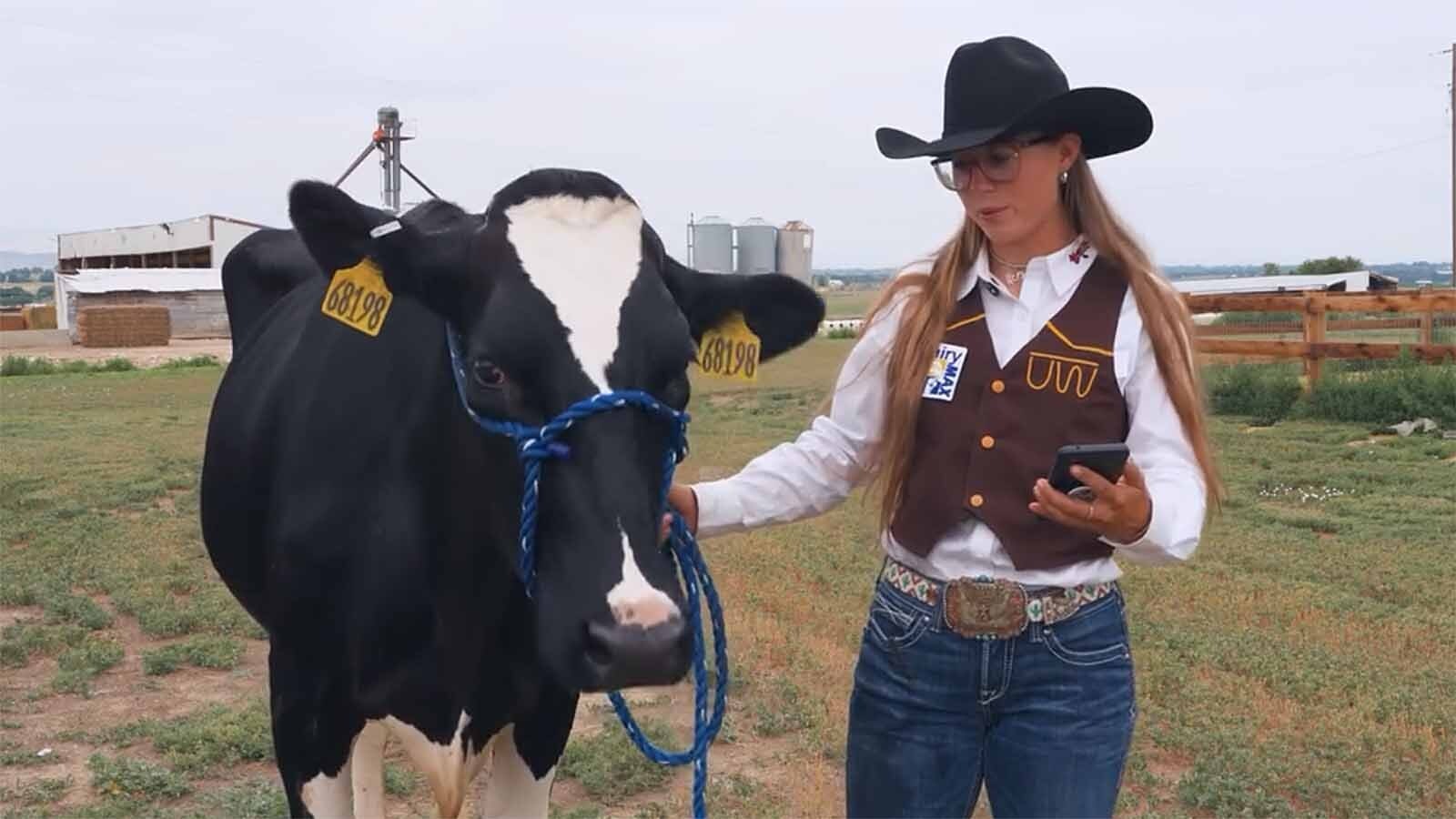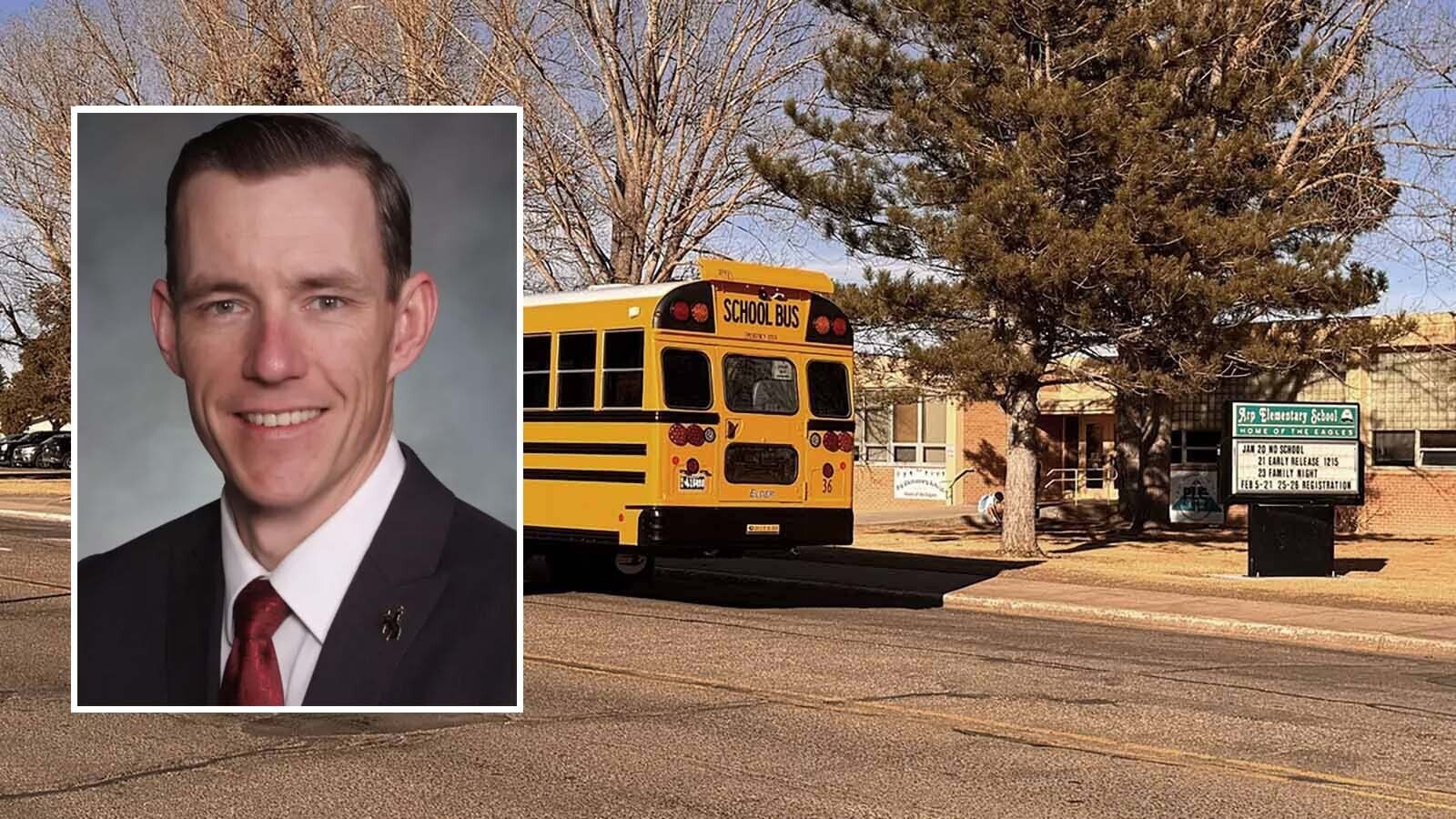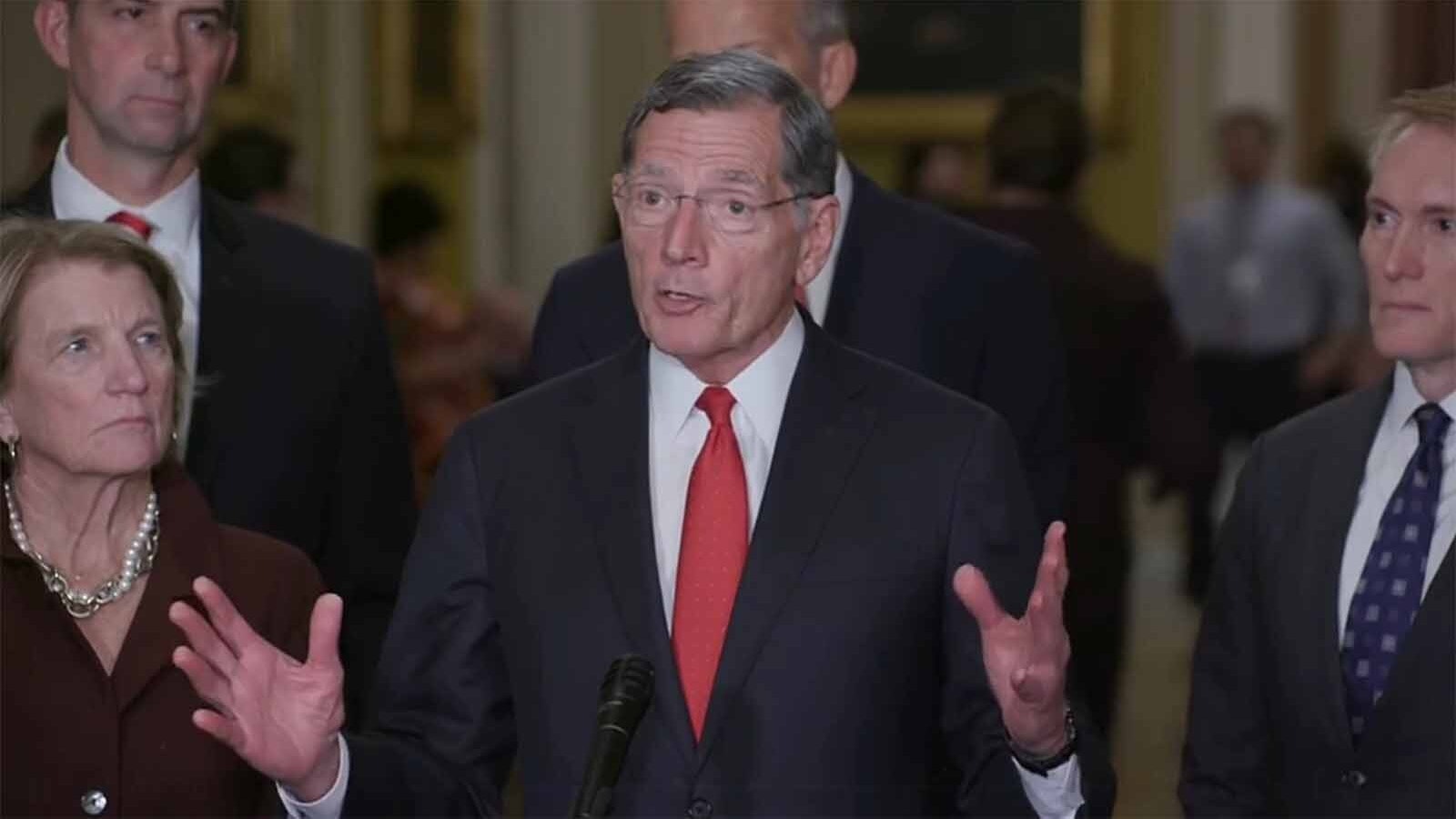After nearly four hours of educational presentation and passionate testimony, a legislative committee voted Thursday to draft legislation that could halt cloud seeding programs in Wyoming, ban geoengineering, and deliver a message to Congress.
The message the Joint Agriculture, State & Public Lands and Water Resources Committee voted in favor of drafting and potentially sending to Congress remained unclear to the public as the vote happened Thursday.
No lawmaker had read it aloud or described it ahead of the vote.
Resolution sponsor Rep. Mike Schmid, R-La Barge, told Cowboy State Daily in a later text that the proposed joint resolution would urge Congress to disallow unauthorized atmospheric geoengineering and weather modification over Wyoming.
The other two proposed bills, however, Schmid had described aloud during the committee.
One would ban cloud seeding over Wyoming for 10 years while directing state officials to research precipitation and water, finding a baseline of those categories within nature.
The other would ban geoengineering over Wyoming such as stratospheric injection and solar radiation management, Schmid told the committee. It would exempt normal aviation, crop dusting, and fire suppression, he added.
Schmid handed the proposals to committee members moments before the vote.
The committee voted for its staffers at the Legislative Service Office to draft all three proposals into bills and a draft resolution.
In the 2025 legislative session, Wyoming pulled state funding for both ground and airborne cloud seeding programs.
The state authorized ground-based operations provided that 100% of the funding comes from Colorado River water users or other interested parties, Barry Lawrence, Wyoming Water Development Office Deputy Director of Planning, noted.
Winter Seeding
A panel of cloud seeding experts told the committee that environmental effects of the practice are negligible, depositing silver within the environment that is well within natural levels, for example.
The scientists were careful to distinguish their work from geoengineering, saying the cloud seeding Wyoming uses has nothing to do with “chemtrails.”
Wyoming uses glaciogenic seeding, injecting silver iodide into supercooled (around 20 degrees Fahrenheit) clouds to encourage the water droplets into an ice state so that the ice will grow heavier and fall as precipitation, according to the presentation.
Another scientist, Maria Crisler, countered, saying she has found harmful chemicals in Wyoming’s environment and believes there is a link between cloud seeding and chemtrails.
Decades
When Schmid presented his bills, he noted that cloud seeding research has been ongoing for decades.
It’s a more-than-60-year-old science that yielded what the scientists cast as limited results for many of its early years.
But in southwest Idaho in 2017, researchers from several institutions and labs — with the use of University of Wyoming equipment — had a breakthrough, according to Dr. Jeff French, department head at the University of Wyoming Department of Atmospheric Science.
“What we found was really quite astonishing,” said French. “Our eureka moment. … We (witnessed) cloud seeding material being added to a cloud, precipitation forming, and falling to the ground.”
Scientists were able to attribute the precipitation to the cloud seeding material because both those incidents unfolded via a zigzag pattern in the cloud, said French.
Jonathan Jennings, meteorologist at the Utah Division of Water Resources, told Schmid under questioning that he’s “very solid” in his assertion that the science is beneficial where used.
Schmid countered that there’s no natural baseline to distinguish and determine whether cloud seeding leaves lands better hydrated than otherwise.
Jennings said there is more work to do in the science, which is where University of Wyoming and other institutions’ research comes in.
French said he’d frame the science with more caution, since science is rarely definitive while its research is ongoing.
“We should be putting research towards answering that question,” said French.
Pause
Schmid, when presenting his moratorium bill proposal, said Wyoming owes it to the people to research this issue better before conducting more cloud seeding operations.
“I’m asking for one decade,” said Schmid. “They’ve had seven.”
Committee Co-Chair Sen. Bob Ide, R-Casper, agreed.
“I’m kind of on the fence on whether it’s even the proper role of government to intervene here,” Ide told the scientists. He said their reports were “fantastic” and he learned a lot.
“But I’m trying to figure out what our role is here as a state legislature,” Ide added. “And whether that’s the right thing to do according to our duties.”
Public presenters voiced concerns about crisscross patterns in the skies and pervasive hazes over Casper and other places.
One of those was Rep. Tony Locke, R-Casper, who visited the committee as a legislator who’s not a member of it.
He saw about 12 crisscross patterns in the sky over Casper recently, he said. They remained through the morning, and by 3:30 p.m. had merged together “in a massive cloud haze that hung over Casper for the next several hours.”
“That’s not natural,” said Locke, who later added that he wasn’t discussing cloud seeding, but a “much more dangerous” chemical injection.
Sen. Barry Crago-R-Buffalo, said he’d prefer to research the issue more before drafting three pieces of legislation around it.
“Maybe we should hire someone to figure out what the hell is going on before we outlaw it,” said Crago. “I think you’ll get a lot of support for it, if that’s what we’re trying to do.”
Schmid said it’s best to pause the activities first, “to get your hands around” them.
Rep. John Eklund, R-Cheyenne, voiced frustration at receiving the proposed bills moments before the committee voted on them.
“I don’t know what either of these bills do,” he said. “(You’re) springing them on us.”
Clair McFarland can be reached at clair@cowboystatedaily.com.





